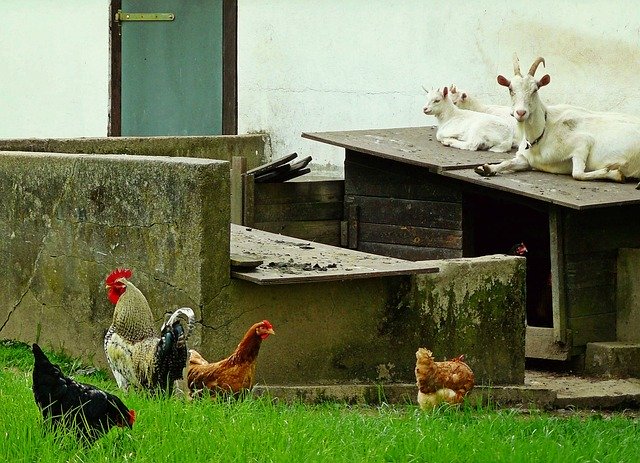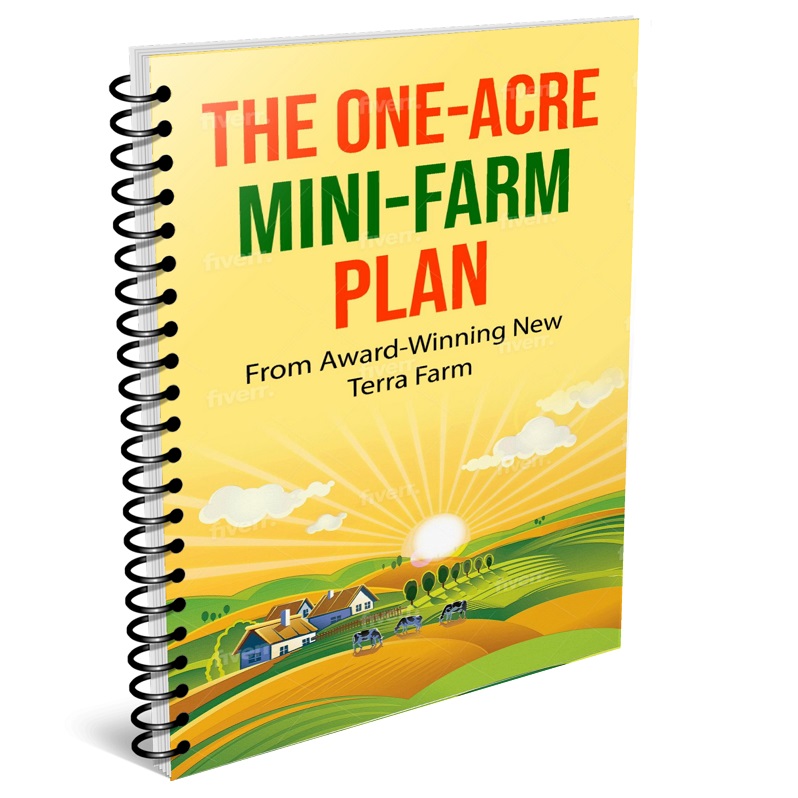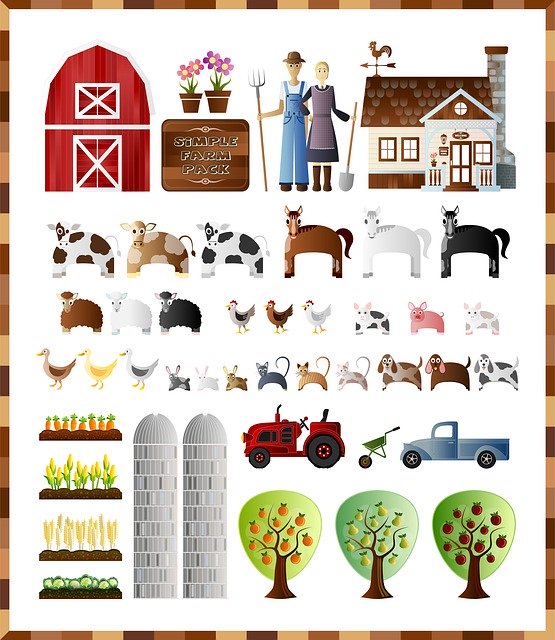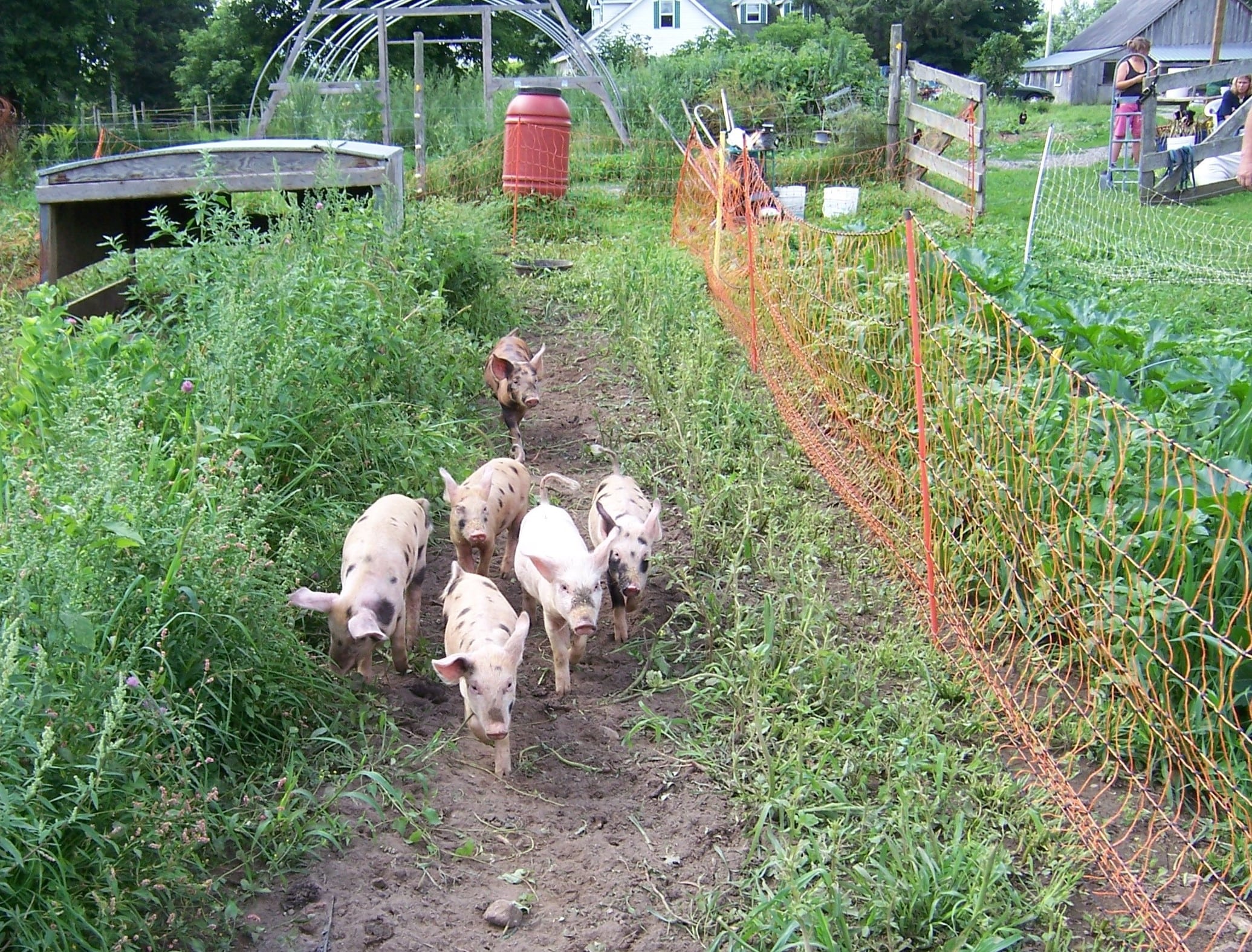How to Become a Homesteader: Turning the Dream of Self-Reliance into a Real, Working Lifestyle
 The dream: How to become a homesteader
The dream: How to become a homesteaderSo, you’ve caught the homesteading bug. Maybe it’s the rising cost of groceries, the craving for a simpler life, or the urge to put your hands back in the soil. Whatever sparked it, you’re not alone. Thousands of people every year decide they want to take control of their food, their home, and their future.
But here’s the problem: most people don’t know where to start. They buy a few chickens, plant a too-big garden, and get overwhelmed. Within too short a time, they’re burned out or broke sometimes both.
Let’s sort that.
Twenty-five years ago we bought a property that eventually became New Terra Farm. We learned a few things about homesteading along the way.
Homesteading isn’t about doing everything yourself; it’s about learning to do enough, wisely, sustainably, and profitably. In this article we'll walk through what becoming a homesteader really means, what most folks get wrong, and how you can build a lifestyle that actually works.
Free Report

Get my FREE One-Acre Farm Plan and learn how to raise pigs, chickens and more, integrated with an organic market garden, to
make more money from your small property.
Imagine building a profitable and sustainable mini-farm even on a small piece of land.
Enter your best email and the plan will be sent to you right away.
What Homesteading Really Means (and Why It Matters)
Homesteading is often defined by what it rejects - debt, dependence, consumerism - but it’s more useful to say homesteading is about building systems that sustain you.
That might mean growing your own food, generating your own power, preserving your harvest, or earning income from your land. The common thread is self-reliance: making choices that move you away from dependency and toward resilience.
Why is that important?
Because the modern world runs on fragility. Supply chains snap. Prices spike. Governments change rules overnight. Homesteading gives you a buffer; a way to feed yourself, heat your home, and earn a living no matter what’s happening “out there.”
It’s not about running from society; it’s about being less vulnerable to it.
What Most People Do (and Why It Doesn’t Work)
 You can do just about anything on your homestead, but not all at once.
You can do just about anything on your homestead, but not all at once.Here's a key point: you can do anything, but you can't do everything. When people first decide to “become homesteaders,” they tend to go all-in, before they’ve learned the basics.
Here’s the typical pattern:
- They move to the country, buy too much land, and get buried in debt.
- They try to do everything - chickens, goats, bees, gardens, solar, canning - all at once.
- They don’t track costs or yields, assuming “homegrown = savings.”
- They depend on YouTube for advice but never build real, local know-how.
And within a year or two, they’re exhausted. The projects stop paying off. The dream feels like a burden.
The truth? Homesteading fails when it starts as a fantasy instead of a plan.
You don’t need 20 acres, a barn, or an Instagram-perfect pantry. You need systems; small, repeatable systems that reduce costs, build skills, and generate a surplus you can sell or trade.
That is exactly the path we followed, one system leading to and supporting the next. That's how you stay sane and stay on-track.
How to Becomes A Homesteader: A Better Approach
 We got good at market gardening and raising chickens for sale BEFORE we took on piggies.
We got good at market gardening and raising chickens for sale BEFORE we took on piggies.Here's an approach with a better chance of success:
1. Start Where You Are.
Don’t wait for the “perfect property.” If you’ve got a yard, a balcony, or even a sunny window, you’ve got a start. The habits of homesteading - i.e. growing, preserving, managing, repairing - can all be practiced now.
2. Think Systems, Not Projects.
A raised bed isn’t a system; but a four-bed rotation plan with compost input, succession crops, and a season-extending cover is. The goal isn’t to “build a chicken coop,” it’s to build an egg system, with housing, feed, water, and a market for the surplus.
3. Make It Pay Early.
Nothing builds momentum like cash flow. Sell a few dozen eggs. Offer composted manure to gardeners. Grow high-value herbs in pots and sell starter plants. Even $100/month proves the system works and helps fund your next step.
Our first market garden was about the size of a big back yard. But the purpose of the garden (besides the cash flow), was to learn the business so we could expand in future seasons
4. Build Resilience, Not Isolation.
Homesteading isn’t about going off-grid; it’s about building stronger connections. Barter with neighbors. Join local co-ops. Learn from nearby farmers. Independence is actually interdependence with the right people.
5. Keep Learning, Keep Records.
Track your costs, yields, and time spent. You’ll quickly see what works and what doesn’t. The most successful homesteaders think like small business owners, because in reality they are. It just so happens the 'business' is their life.
Action Steps: How to Become a Homesteader
Let’s turn all this philosophy into actionable steps. Here’s a step-by-step path you can follow.
Step 1: Define Your “Why” and Your Vision
Ask yourself what draws you to homesteading.
- Food security?
- Lower costs of living?
- Environmental responsibility?
- Freedom from the rat race?
Write it down. Your “why” will guide your choices when things get tough — and they will get tough.
Then, sketch your vision. In five years, what do you want your homestead to look like? Be specific: how much land, how much food, what income streams?
Step 2: Assess What You Have Now
Make a quick inventory:
- Space (yard, balcony, basement, etc.)
- Tools and supplies
- Skills and experience
- Time available each week
- Money you can invest
Homesteading isn’t about what you don’t have; it’s about using what you do have efficiently.
Step 3: Pick One Core Skill to Master
Start with one area:
- Food: grow a small garden or start container tomatoes.
- Animals: raise 4–6 hens.
- Preservation: learn water-bath canning or dehydrating.
- Income: sell something small, like herb bundles or micro greens.
Master it, record your process, and build from there.
Step 4: Build a 3-Month Starter Plan
Create a short, achievable plan:
- 3–5 goals (like “grow 10 meals worth of veggies”)
- Basic budget (what you’ll spend and what you expect back)
- Weekly work blocks for garden or animal chores
Review and adjust monthly. The key is consistency, not speed.
Step 5: Reinvest and Expand
When you hit small wins — extra eggs, extra produce, saved grocery money — reinvest it. Buy better tools, add composting, or start a new enterprise. Each step should make the next one easier.
Common Mistakes and How to Avoid Them
Mistake #1: Going Too Big Too Fast
More land means more work, not more freedom. Start with what you can manage in 1–2 hours a day. Expansion is earned through efficiency, not enthusiasm.
Mistake #2: Ignoring the Numbers
Track expenses and time. That “free food” might be costing you $20 a tomato if you’re not watching the math. Record-keeping is the difference between a dream and a business.
Mistake #3: Neglecting Maintenance
Homesteads collapse from neglect. Clean coops, sharpen tools, fix leaks; get in the habit to keep your systems alive. Don't neglect maintenance on yourself as well. Allow time for recovery from bursts of action,avoid burnout.
Mistake #4: Thinking “DIY” Means “Do It All Yourself”
Smart homesteaders delegate. Buy from local producers when it’s cheaper or smarter than making it. Collaboration keeps you sane.
Mistake #5: Comparing Your Start to Someone Else’s Middle
Every Instagram homesteader started small. You’re not behind, you’re just beginning. Focus on progress, not perfection.
How To Become A Homesteader: The Takeaway
Learning how to become a homesteader isn’t about geography; it’s about mindset. It’s about taking control of your needs one small system at a time.
Most people overreach and under-plan. You’re going to do the opposite: plan small, execute consistently, and build momentum.
Start where you are. Learn what works. Reinvest your gains. And before long, you’ll wake up one morning and realize you didn’t just start homesteading. You became a homesteader.
Resources for 'How to Become a Homesteader'
Chapter 2 - The Homestead Plan: The Self-Sufficient Backyard
No matter who and where you are, the goal should be the same: be as self-sufficient as you can on your own small property: The Homesteader Book Bundle
Fresh egg for breakfast (and maybe barter): The Eggs Factory
- Home
- Homesteading Today
- How to Become a Homesteader
See something you like? Share!
Recent Articles
-
Farm grown reviews of products recommended by New Terra Farm
Dec 04, 25 06:26 AM
Find great farm and garden products in my farm grown reviews -
Best Chicken Coop and Accessories for Small Farms and Homesteads
Nov 30, 25 09:18 AM
Looking for the best chicken coop? Here are the top coops, accessories, nest boxes, and gear to build a safe, productive poultry setup. -
Community Supported Agriculture Marketing Ideas To Sell Out The Season
Nov 05, 25 05:18 AM
Authentic Community Supported Agriculture marketing ideas to grow loyalty, boost sign-ups, and sell out your CSA every year



